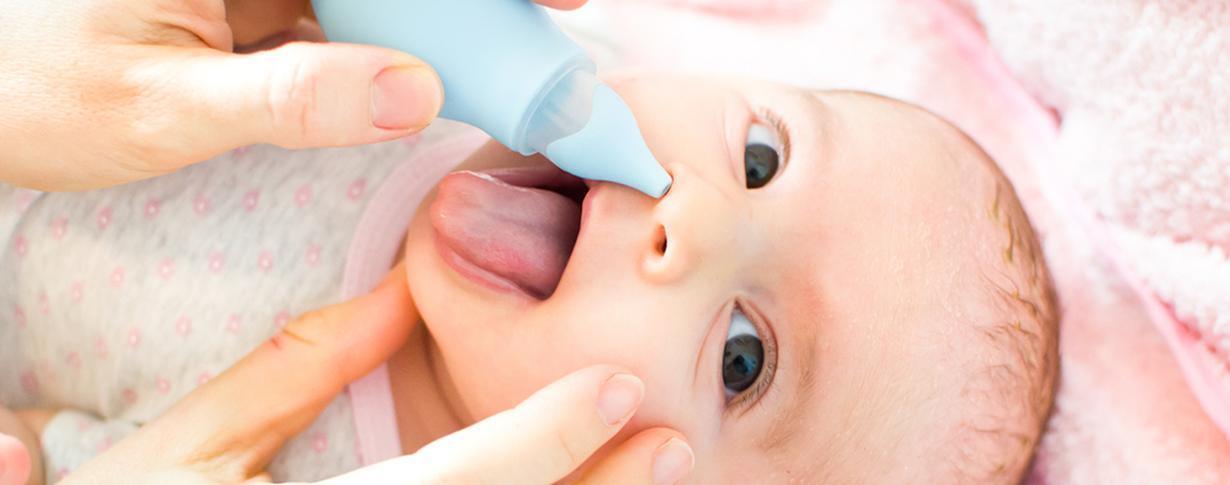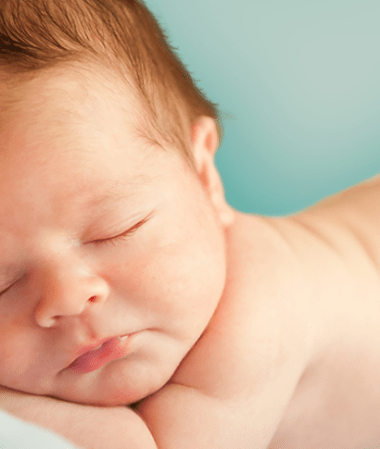Nasal Congestion in Newborns Can Be a Sign of Very Serious Diseases!
Since air exchange through the nose is very important in newborns and babies under two months, serious respiratory problems can be seen, especially in cases where the nose is bilateral and completely blocked.
Causes of Nasal Congestion:
The most common cause of nasal congestion in newborns is nasal congestion without any other signs of illness. Bilateral nasal congestion and wheezing are also common as a result of nasal mucosal edema due to upper respiratory tract infection, gastroesophageal reflux, trauma, cow’s milk and soy protein allergies.
Although the infectious agents are mainly viral upper respiratory tract infections, sometimes more severe infectious agents may also cause nasal involvement in addition to other findings.
Reflux, which can be defined as the reflux of stomach acid into the esophagus and throat, may also present with nasal congestion and wheezing, especially in premature infants and infants with neuromuscular system disease.
Other less common causes are nasal mucosal edema due to overuse of some locally used nasal drops and some medications used by the mother.
In addition to problems such as growth retardation, constipation, umbilical hernia, wheezing can be detected in babies with thyroid hormone deficiency.
Nasal wheezing in newborns can also be caused by the trauma of nasal catheters used to help the baby’s breathing by removing the secretions from the mouth and nose during birth.
Another group of diseases that can cause unilateral or bilateral wheezing and congestion are structural disorders of the nose. While these are sometimes in the form of nasal curvature or nasal mass and can be easily recognized, sometimes the definitive diagnosis can only be made by endoscopy or imaging methods. Nasal curvature is seen in approximately 1% of newborns, mostly as a result of nasal pressure before or during birth. In these babies, it is usually sufficient to wait by relieving breathing with edema-reducing drops.
The most common mass in the nose is the tear duct cyst, and it can also cause swelling between the eye and the nasal root. These masses can be the cause of wheezing, as well as sometimes inflamed and cause disease.
Choanal atresia is a condition that is seen in approximately one in 8000 births and describes the complete closure of the posterior nasal opening by bone or membrane tissue. It is usually one-sided and complete obstruction, and half of the patients have other organ problems such as heart, kidney, eye and ear. These babies breathe better when crying and may seek medical attention with bruising while feeding. In case of bilateral obstruction, respiratory support may be required at the time of delivery.
Signs and Symptoms:
Wheezing, noisy breathing, clear or thick discharge are the most common complaints in babies with nasal congestion. Sometimes sleep disorders, feeding problems (choking, bruising, weight gain, vomiting), abdominal tension as a result of excessive air swallowing, uneasiness that can be confused with gas pains may be reasons for consulting a doctor.
What should be done?:
Wheezing in babies can be due to simple and easily correctable causes, but sometimes it can be a symptom of very serious diseases. Respiration, feeding and development of the baby can be affected in proportion to the degree of obstruction.
Newborns with wheezing seen by a pediatric and ENT specialist should be evaluated initially with anamnesis and physical examination, and if necessary, with more specific examinations.
Whether the nose is open or both sides participate in breathing at the same rate can be determined simply by covering the baby’s mouth and one nostril with the palm of the hand while resting the air in and out of the exposed nostril, or by observing the mist created on a cold metal surface. A few drops of saline dripped into the nostril and the formation of physiologic bubbles indicates that the nose is open.
After the initial evaluation on the location and cause of nasal obstruction, necessary investigations are requested in line with the suspected diseases. The treatment is the use of drops to ease the breathing of the baby with wheezing and the medical or surgical treatment of the detected cause.
If both nostrils are open, the baby does not appear seriously ill, and there is no intranasal mass in the rhinoscopic examination, saline nasal drops can be used.







